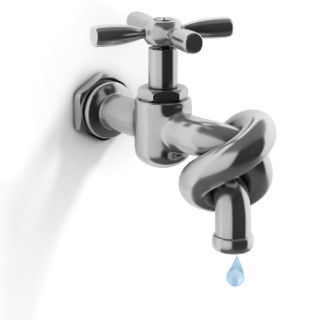
The lighthearted introduction to a serious shortage
As a lifelong (until three months ago) resident of the agricultural hub of California that is the San Joaquin Valley, I have to admit that though indulging in the so-called human nature trait of loving to hate where I am from is quite tempting, I am the first to brag with pride about the diversified and distinct history of each section of the San Joaquin Valley. In fact, within a 30-mile radius of Fresno, a traveler can expect to see everything from the “Swedish village” of Kingsburg to the riverbank and country roads of Reedley.
This showcasing is simply to point out that it does not at all surprise me that a valley made up of so many different units would disagree on a major natural resource that ties them all together: water.
The water crisis overview
The first issue that faces the Central Valley is the misunderstanding of how much of California’s water budget farmers use. To shed light on the situation, the
California Farm Water Coalition (CFWC) sent out a recent study showing that the general public and news media alike usually over exaggerate the amount of water used by farmers, to their detriment. According to statistics provided by the CFWC, The California Department of Water Resources estimates the state’s developed water supply at 78 million acre-feet. Of that, 46% is used by the environment, 43% is used on farms and 11% is used in homes and businesses. Furthermore, according to the CFWC, the high use by both the environmental and farm causes are troubling because the combined state and federal surface water deliveries currently total approximately 4.8 million acre-feet, a 14% reduction from 1990. California will grow from 29.8 million people in 1990 to approximately 46 million by 2020, a 54% increase. When all is well with the water supply, none of this equates to more than a bookkeeping note.
With a potential fourth dry season ahead, the California State Board of Food and Agriculture met in Fresno on Wednesday, October 14 and discussed the current and long-term impacts of water shortages. Regardless of the stance on the drought or on the delta smelt, the facts still show themselves — there is more demand than supply of water, and it is getting worse each year. According to a statement put out by the Association of California Water Agencies Executive Director Timothy Quinn, the U.S. Bureau of Reclamation and the California Department of Water announced that some agricultural contractors stand to receive no water deliveries this year, while municipal contractors can count on receiving a 50% supply. Urban and agricultural customers of the State Water Project stand to receive just 15% of requested supplies, making it one of the lowest forecasts to date.
The drought and the delta smelt
Simply put, after a third year of severe drought and a controversial 2008 call regarding the temporary halt of pumping water to 750,000 acres of cropland to save a species of fish called
delta smelt, this shortage damages this area in particular, because San Joaquin Valley farmers grow an estimated 25% of the nation’s food supply. Also, it halted the
Central Valley Project, which did some damage as well.
So, what happened to all of the water? It depends on who you ask. While everyone from the representatives from the
Department of the Interior to Executive Director Dan Nelson of the
San Luis & Delta Mendota Water Authority are arguing different angles, everyday people, whom these shortages really affect, have come out of the woodwork to voice their opinions online.
ThePetitionSite.com, for instance, allowed concerned citizens to take their frustration about the water crisis. The result is a draft resembling the preamble to the Untied States Constitution.
“We the people of the United States of America are hereby demanding the water pumps for the Central Valley area of California be turned on immediately. We are demanding immediate action be taken to ensure that the crops being grown in this and its surrounding areas receive water the farmers need to yield a good crops for 2009 and in the future.”
The semi-resolution: the people speak while they wait
On a more mainstream note, Fresno mayor Ashley Swearengin recently issued a statement regarding the water shortage affecting the San Joaquin Valley that sums up the problem and the needed solutions quite well:
“I applaud Gov. Schwarzenegger for rightly keeping attention focused on dealing with our water crisis. The Fresno area and the entire San Joaquin Valley have dealt firsthand with the devastating effects of this crisis, but this is an issue that truly has a significant impact on our entire state.
“We can no longer afford to put off taking action on this issue — solving this crisis should be the top priority in Sacramento. The Legislature must come together and deliver a comprehensive water plan to the governor, and they must do it now.”
For more information on climate change, check out Blog Action Day.


